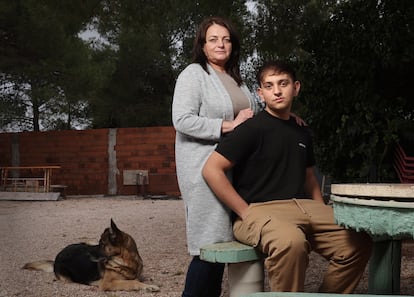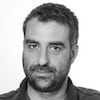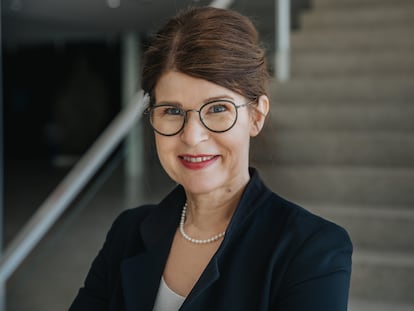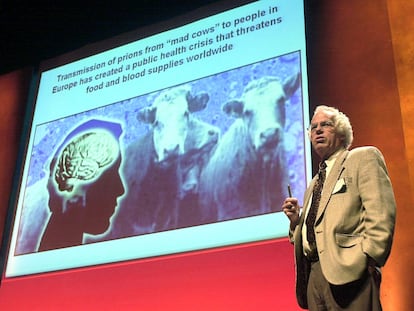Skysona: The gene therapy that saved Darius’ life cannot help any more European children
The commercial strategy of the pharmaceutical company Bluebird Bio, which left the EU after a dispute with Germany over the price of another drug, leaves dozens of minors suffering from a rare fatal hereditary disease with no treatment


Darius is a milestone in medicine, and at the same time he is an example of the cruel consequences that some pharmaceutical commercial strategies can have. At 15 years old, he was one of the first children in the world to be cured of a rare fatal genetic disease known as early cerebral adrenoleukodystrophy (CALD), thanks to a gene therapy called Skysona. However, the treatment, which Darius was able to access in the research phase when he was five years old, is not available to other minors in Europe, because the pharmaceutical company Bluebird Bio refuses to sell its drugs in the European Union after a dispute with Germany over the price of Zynteglo, another drug. This happened in 2021, and since then dozens of children have missed their opportunity.
“I’m having a really hard time wrapping my head around this,” muses María Potirniche, Darius’ mother, sitting in the living room of the house where the family, which arrived from Romania 20 years ago, lives in the town of Quintanar de la Orden, in Spain. “My first son, Danuk, had the same illness. He was already in a very bad state when Darius was born. He died just ten months later. This is why it was very hard to find out that Darius also had the mutation. I got depressed. I thought I was going to lose him too. What happened next was like a miracle. He was cured. He is a happy child. Why can’t others be?
“it is a very complicated, terrible situation,” says geneticist Aurora Pujol, from the Bellvitge Biomedical Research Institute (Idibell), an expert in leukodystrophies who has been involved in the development of Skysona for more than a decade, without hiding her frustration. The worst experience of these years, she admits, has been not being able to keep the promises made to some families: “Fathers and mothers who had lost their firstborn child and to whom one said that there was still hope for the little ones...”
Cerebral adrenoleukodystrophy, explains Pujol, is caused by a mutation in the ABCD1 gene, located on the X chromosome, which affects myelin, the white matter of the brain: “Myelin covers neurons and allows them to transmit information. The disease is a metabolic defect that triggers an inflammatory process that destroys it and prevents the brain from functioning. This usually occurs between the ages of five and eight in previously healthy children.”
Not all children born with the mutation will develop CALD. For reasons that are not well understood, more than half of male children who have it will not develop it, and they will suffer less aggressive neurological disorders at older ages. In the case of girls, since they have two X chromosomes, the healthy chromosome can make up for the damaged one.
The most cited estimates in the scientific literature suggest that approximately one in every 20,000 male children born alive will suffer the lethal consequences of the mutation. Before the development of Skysona, a bone marrow transplant was their only hope: “When successful, the transplant can also cure the disease. The problem is that in most cases the operation cannot be done, or it’s not successful,” says Pujol.
The main reason is that in more than 70% of cases a compatible donor cannot be found, according to data from the European Medicines Agency (EMA). Even when there is one, the operation sometimes does not go well: “In Spain, it usually happens in half of the patients. Worldwide, in the hospitals with the best success rates, this goes up to 80%,” adds this geneticist.
Considering these data, the results obtained by Skysona are overwhelming, with disease-free survival rates close to 90% after the first two years, according to clinical trials. The treatment uses a virus that works like a Trojan horse: it is introduced into the body with a healthy copy of the damaged gene inside, replacing it and preventing the destruction of myelin.
The European governments never actually negotiated the financing of Skysona with Bluebird Bio, but the therapy suffered the consequences of the strategic turn taken by the company after its commercial disputes with Germany over Zynteglo. This country is usually the first that pharmaceutical companies choose to introduce their treatments in Europe; in this case, the drug did not obtain in hospitals the results indicated by the clinical trials, which led the German government to try to renegotiate the initial price of €1.6 million and lower it to a range between €600,000 and €700,000.
As a response, Bluebird Bio turned its back on all of Europe. In August of that year, the company announced that it was shutting down its operations in the continent, and in all the countries where there were negotiations underway to set the price of Zynteglo, they abruptly ended. Those for Skysona, which had just been approved by the EMA in July, had not even started, and the new therapy never reached the hospitals. On November 18, 2021, Bluebird Bio’s “decision to permanently discontinue the marketing of the product for commercial reasons” in the EU was formalized, according to EMA documentation.
A company spokesperson explains in writing: “The decision to cease operations in the EU and UK came after two years of discussions with European reimbursement authorities for Zynteglo. During that time, it became clear that European authorities were unwilling to recognize the value of a one-time, potentially curative medicine. The reality is that it would cost Bluebird more to deliver these therapies to patients than what European authorities were willing to pay. [...]Therefore, as part of the winding down of operations, we made the difficult decision to withdraw the regulatory marketing authorization for Skysona from the European Union. [...] We anticipate withdrawing marketing authorizations for Zynteglo from both the EU and the UK by early 2022. [...] While we continue to investigate ways to make these therapies available to patients outside of the US, the path forward is unclear.”
After this move, the pharmaceutical company focused its efforts on obtaining approval for its two therapies in the United States, which it did in the summer of 2022, with a price of $2.8 million for Zynteglo and $3 million for Skysona. On April 1, The Boston Globe published the story of Conner Hess, a six-year-old boy who was the first commercial patient in the world to receive the treatment.
Paradoxically – and without this having influenced the company’s most recent decisions – the research that made it possible for Skysona to become a reality began in public hospitals in the EU, with a team from the French National Institute of Health and Medical Research (INSERM), led by researchers Patrick Aubourg and Nathalie Cartier, putting its faith on a gene therapy to deal with early cerebral adrenoleukodystrophy almost 20 years ago.
The team’s advances were published in the scientific journal Science in 2009. Coinciding with the publication, Bluebird Bio — called Genetix at the time —announced a licensing agreement with INSERM researchers. These types of agreements, common in the sector, are designed to accelerate the arrival of innovative drugs to the market, and entail the company becoming the owner of the marketing rights in exchange for assuming the necessary investment and the payment of a royalty for future sales. Bluebird Bio’s 2023 annual report mentions those payments to INSERM, albeit not specifying the percentage; only pointing out that it is “in the low single digits.”
Spain also played an important role in the development of Skysona. “The first children who participated in the initial trials of Skysona in France were Spanish,” recalls Carmen Sever, president of the European Leukodystrophies Association in Spain (ELA Spain). The organization illustrates well the role that patient associations sometimes play in the development of new drugs. “Twenty years ago, families came to us and all we could give them was comfort. Then we started talking to doctors at Hospital Niño Jesús (in Madrid) and, through ELA, we contacted Patrick Aubourg. It was 2006 and they were about to start the first trial with five children in Paris. We sent three from here. ELA also helped finance this research,” she explains.
Sever and Giselle Martínez, the association’s social worker, recall the hope, but also the fear, with which those first families traveled to Paris. “We were entering the unknown, but it was either that or giving up. Today, we are proud to say that they are alive. Some suffer aftereffects, such as loss of vision, because the disease was somewhat advanced when they entered the trial and the treatment was in its early stages. But, overall, we can say that they are fine,” says Sever.
The journey in search of a cure for Darius went even further, in every way, for María. In 2014, when she still did not speak Spanish very well, mother and son took a plane from Madrid to Boston, where the trials started by Bluebird Bio in Paris continued. “The first time they told me about going to Boston I asked where in Spain that was. That’s how lost, how scared I was. I didn’t know anyone there, but in the end we stayed for six months. There was no other way,” she says.
For ELA Spain, the current situation is “incomprehensible and unbearable.” “We are back to how we were 20 years ago, watching children die. The big difference is that now there is a cure, a treatment that we all helped to develop. This is hard to stomach,” says Sever. Pujol uses different words to describe the same feeling: “Now all we can tell the families is to raise $3 million and try to go to the United States.”
Juan Oliva, professor of health economics at the University of Castilla-La Mancha, describes Skysona as “an extreme case, but quite illustrative” of situations that can arise in the pharmaceutical market. “Once a treatment has been developed and a company has all the marketing rights, there is very little that governments can do, except for paying what they ask for it,” he explains. This is the reason why he advocates for trying “risk-sharing formulas [with pharmaceutical companies] whereby governments get involved earlier in the development of these groundbreaking therapies; something similar to what was done with the Covid-19 vaccines, so that later, at the time of commercialization, they have a better negotiating position.”
Neboa Zozaya, director of the health economics department at the Weber Foundation, also sees Skysona as an “extreme case” that illustrates the differences between the European health systems and that of the United States. “European healthcare is public and needs to carefully assess the value that each drug provides in relation to its cost, in an equation in which the sustainability of the system also comes into play. In the United States, the system is private and this does not happen. Companies set a price and it is the patients, or their private insurance, who must see if they can afford it. This difference becomes very evident with these types of therapies that provide a lot of value but which come with very high prices,” she explains.
José Vida, professor of administrative law at the Carlos III University of Madrid, confirms that health legislation barely contemplates ways for governments to overcome these kinds of situations. The only option would be to resort to a compulsory license, a formula that, in the case of general interest and anti-competitive conduct by the companies, allows a patent to be skipped. “But it is a very complex process, unprecedented in Spain or almost all of Europe, which also entails an important problem: you still need a third company to produce the drug, something that seems unfeasible in a treatment as expensive and difficult to develop as Skysona,” he points out.
Oblivious to all these controversies, Darius enjoys life like any other teenager in Quintanar de la Orden. He plays sports, goes out with his friends and the early cerebral adrenoleukodystrophy only interferes with his life due to the small doses of cortisone that he still has to take and the periodic check-ups that confirm that he is still healthy. He also argues about school with his mother. In the future, he says, he would like to “start working soon in a large company like [supermarket chain] Mercadona.”
Sign up for our weekly newsletter to get more English-language news coverage from EL PAÍS USA Edition
Tu suscripción se está usando en otro dispositivo
¿Quieres añadir otro usuario a tu suscripción?
Si continúas leyendo en este dispositivo, no se podrá leer en el otro.
FlechaTu suscripción se está usando en otro dispositivo y solo puedes acceder a EL PAÍS desde un dispositivo a la vez.
Si quieres compartir tu cuenta, cambia tu suscripción a la modalidad Premium, así podrás añadir otro usuario. Cada uno accederá con su propia cuenta de email, lo que os permitirá personalizar vuestra experiencia en EL PAÍS.
¿Tienes una suscripción de empresa? Accede aquí para contratar más cuentas.
En el caso de no saber quién está usando tu cuenta, te recomendamos cambiar tu contraseña aquí.
Si decides continuar compartiendo tu cuenta, este mensaje se mostrará en tu dispositivo y en el de la otra persona que está usando tu cuenta de forma indefinida, afectando a tu experiencia de lectura. Puedes consultar aquí los términos y condiciones de la suscripción digital.
More information
Últimas noticias
Most viewed
- Reinhard Genzel, Nobel laureate in physics: ‘One-minute videos will never give you the truth’
- Pablo Escobar’s hippos: A serious environmental problem, 40 years on
- Charles Dubouloz, mountaineering star, retires at 36 with a farewell tour inspired by Walter Bonatti
- Why we lost the habit of sleeping in two segments and how that changed our sense of time
- The fall of a prolific science journal exposes the billion-dollar profits of scientific publishing










































